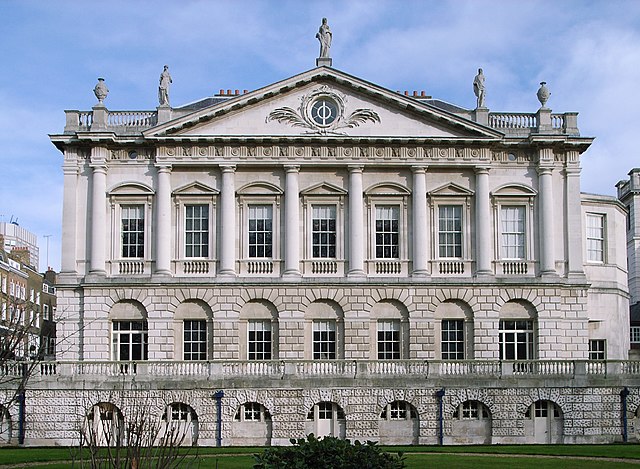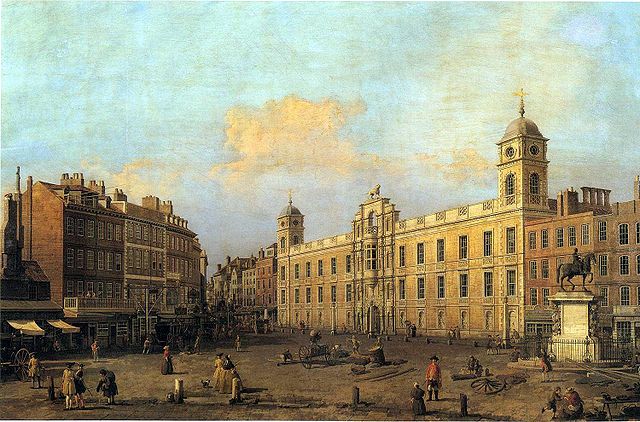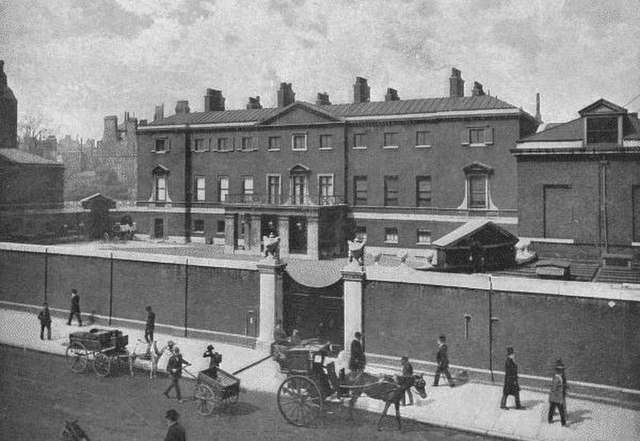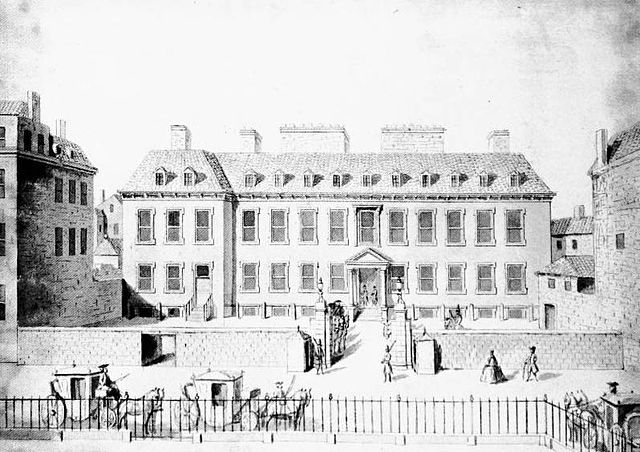Winchester Palace was a 12th-century bishop's palace that served as the London townhouse of the Bishops of Winchester. It was located in the parish of Southwark in Surrey, on the south bank of the River Thames on what is now Clink Street in the London Borough of Southwark, near St Saviour's Church. Grade II listed remains of the demolished palace survive on the site today, designated a Scheduled Ancient Monument, under the care of English Heritage.
Remains of the great hall of Winchester Palace showing the Rose Window and underneath the traditional arrangement of three doors from the screens passage to the buttery, pantry and kitchen.
Doors formerly to the kitchens in the surviving west wall
Winchester Palace, 1660 drawing by Wenceslas Hollar
Townhouse (Great Britain)
In British usage, the term townhouse originally referred to the opulent town or city residence of a member of the nobility or gentry, as opposed to their country seat, generally known as a country house or, colloquially, for the larger ones, stately home. The grandest of the London townhouses were stand-alone buildings, but many were terraced buildings.
Spencer House in St James's, London, one of the last surviving true townhouses still owned by the noble family that built it, the Spencers, although it is now generally leased out commercially. The corresponding country house is Althorp in Northamptonshire.
The Strand front of Northumberland House in 1752 by Canaletto, the townhouse of the Dukes of Northumberland. Note the "Percy Lion" atop the central facade.
Devonshire House, Piccadilly, in 1896
Leicester House on Leicester Fields, 1748







